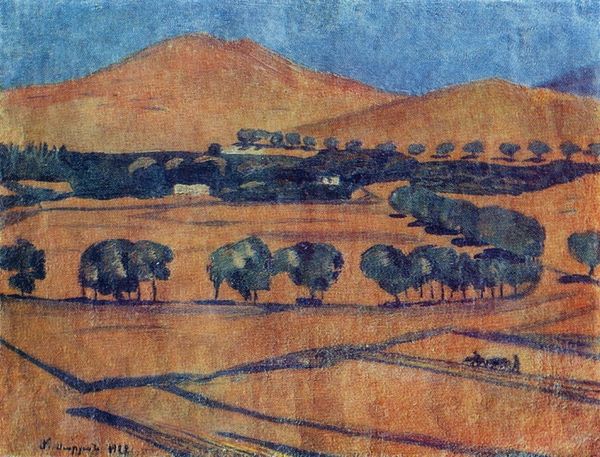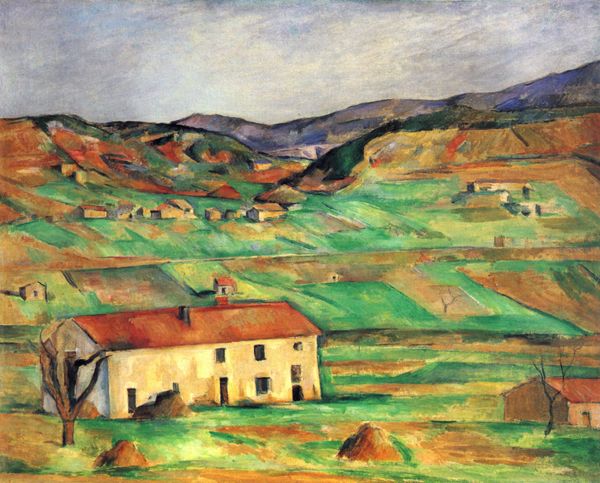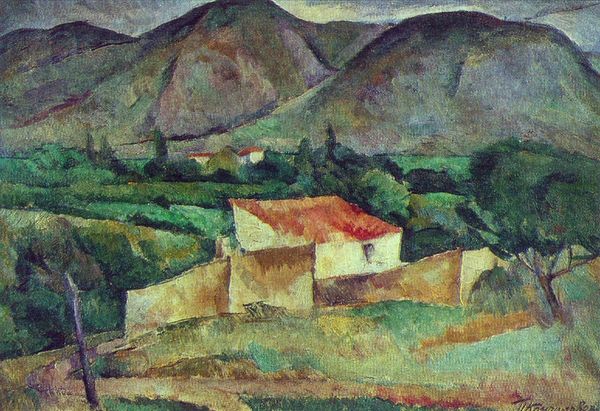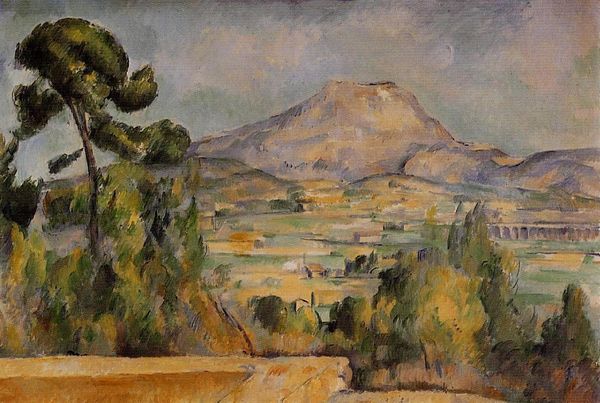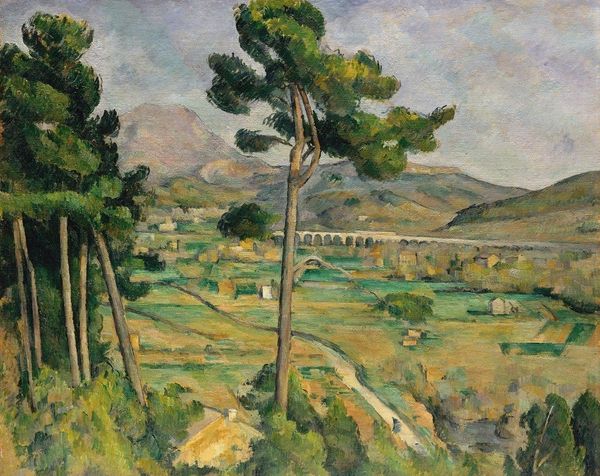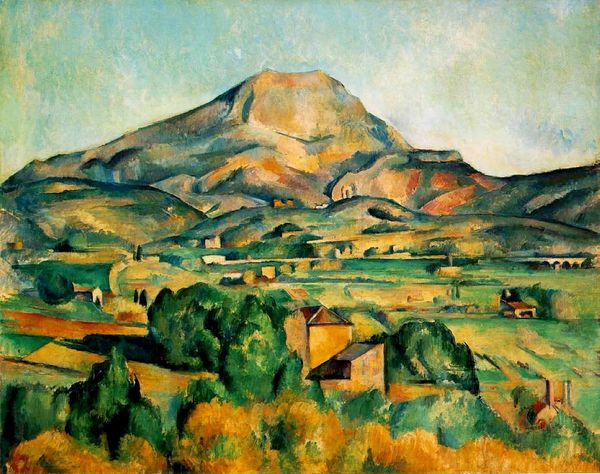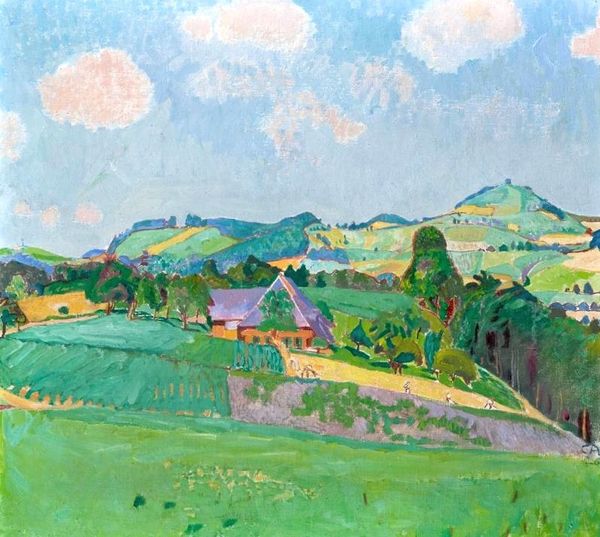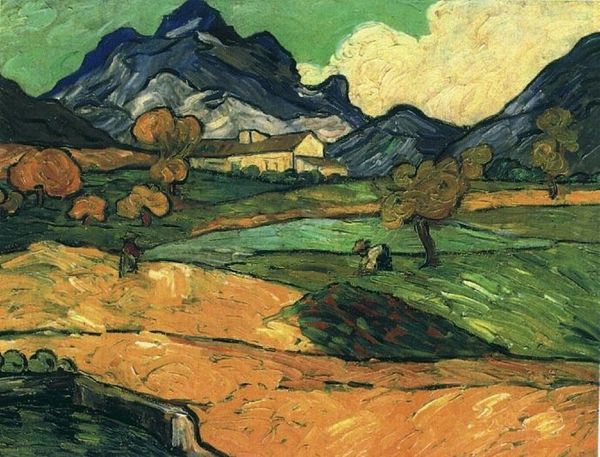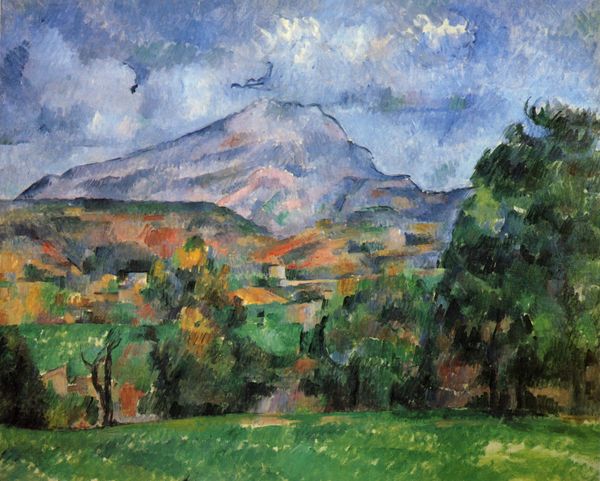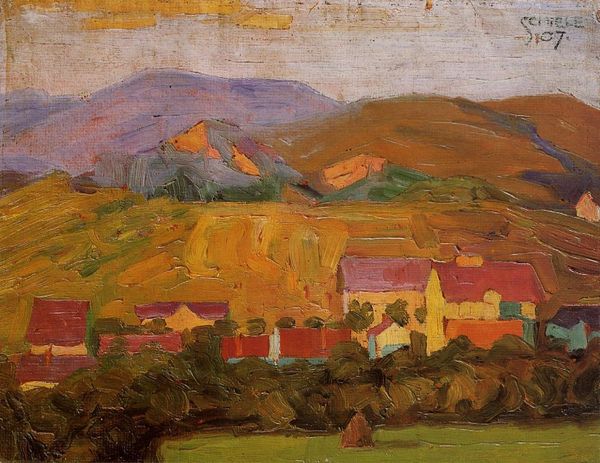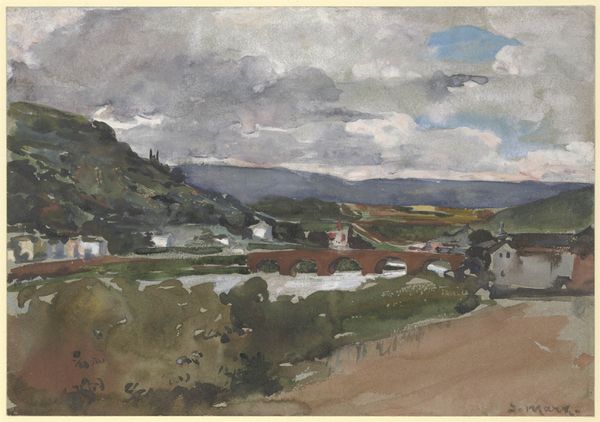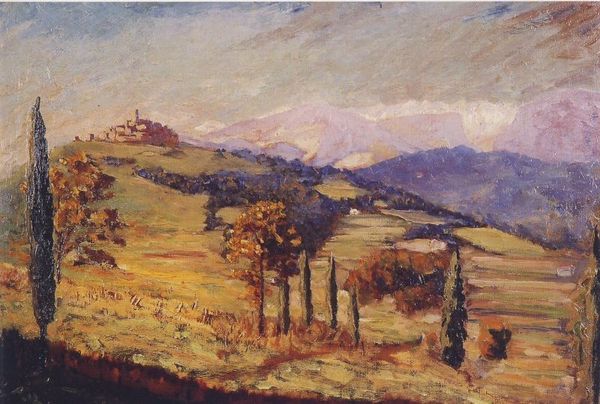
painting, plein-air, oil-paint, impasto
#
painting
#
plein-air
#
oil-paint
#
landscape
#
impasto
#
post-impressionism
Copyright: Public domain
Curator: Take a moment to gaze at "Plain by Mont Sainte-Victoire," an oil painting by Paul Cézanne from around 1880. Editor: My first impression? A brooding stillness. That mountain dominates everything, a solid presence overlooking the almost playful strokes of color in the landscape below. There is some magic here, although not of the sweet, pastoral kind. Curator: Cézanne repeatedly returned to Mont Sainte-Victoire throughout his career. His approach revolutionized landscape painting, shifting away from pure representation to exploring form and structure. He did not romanticize the pastoral. He scrutinized and built it! Editor: You know, those patches of color feel almost…musical? Like individual notes combining to form a harmony, or maybe even a slightly off-key melody. I imagine the way Cezanne applied the paint was a lot like how he saw the world—bits of fragmented observations of everyday reality, each brush stroke working to represent reality piece by piece. Curator: Indeed, Cézanne's technique involves applying paint in distinct, parallel strokes. And of course the paintings, especially the mountain, is of course representative of local landscape of Aix-en-Provence, with a focus on how we experience a particular place. One where tradition meets a new, modernist impulse. He breaks down traditional perspectives. Editor: The building nestled into the landscape seems so vulnerable under that weighty sky and mountain. But not in a bad way; It’s kind of hopeful, like there’s still this little home that reminds one that life goes on amidst all of this vastness. And I’m thinking now how, especially in France after the Commune, such paintings offered citizens the comfort of a very tangible and recognizable patrie. Curator: That’s a very interesting idea; Cézanne was never particularly concerned about political messages or nationalist movements and in a certain way he rebelled against the salon system and academic realism of the Third Republic. But that is of course, another conversation entirely. Editor: I guess what's fascinating to me is how Cézanne managed to create this profound sense of solidity and depth using such broken, almost abstract strokes. It’s as if he’s deconstructing reality in order to rebuild it in a more truthful way. Curator: Ultimately, looking at this work of art can remind you about the complex relationship between history and subjective human experience and what can be communicated to a viewer through materiality alone. Editor: Yes, absolutely! And to consider that relationship between tradition, the trauma of the recent past, and hope for future, which artists will always seek to show.
Comments
No comments
Be the first to comment and join the conversation on the ultimate creative platform.
